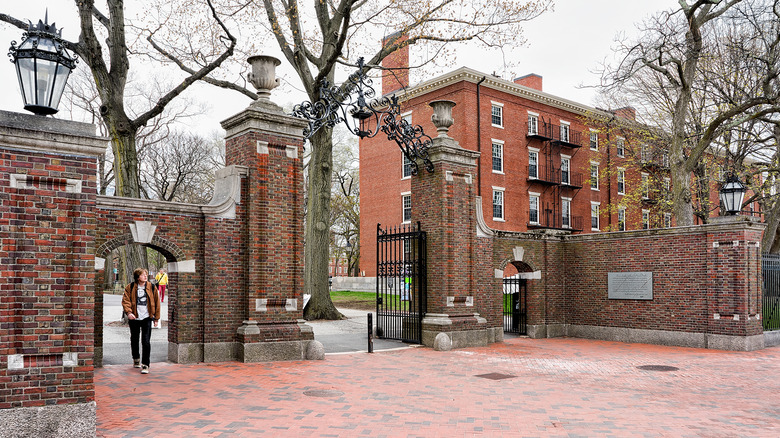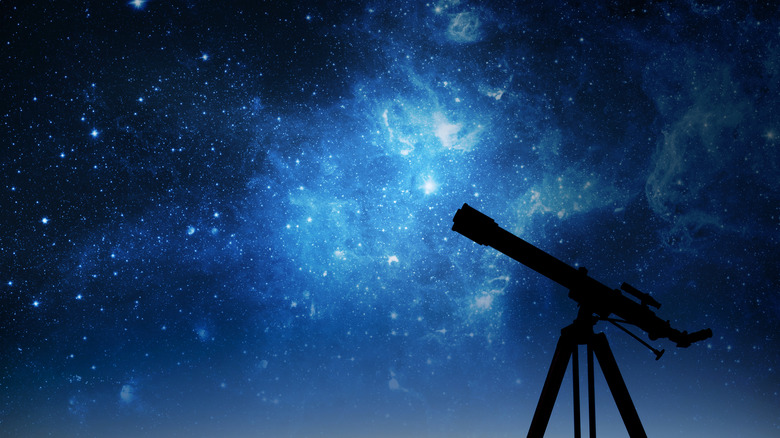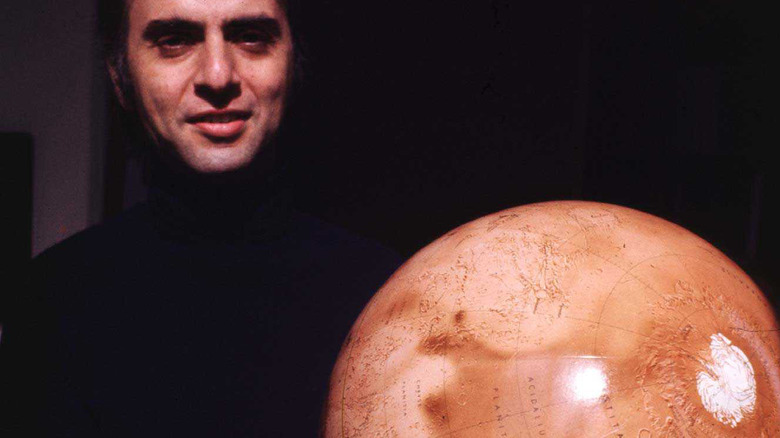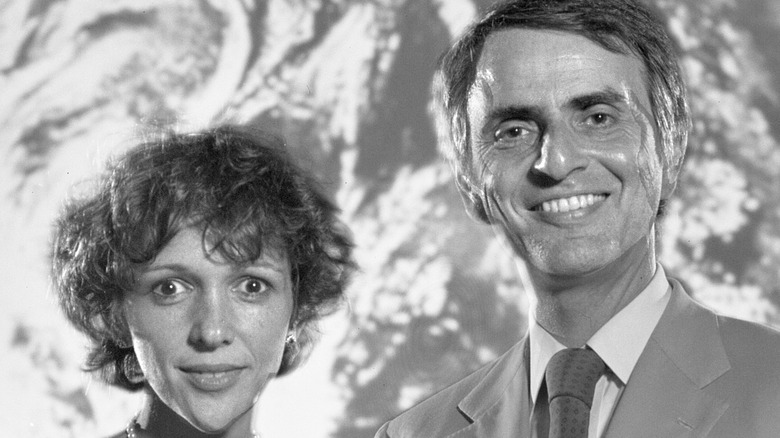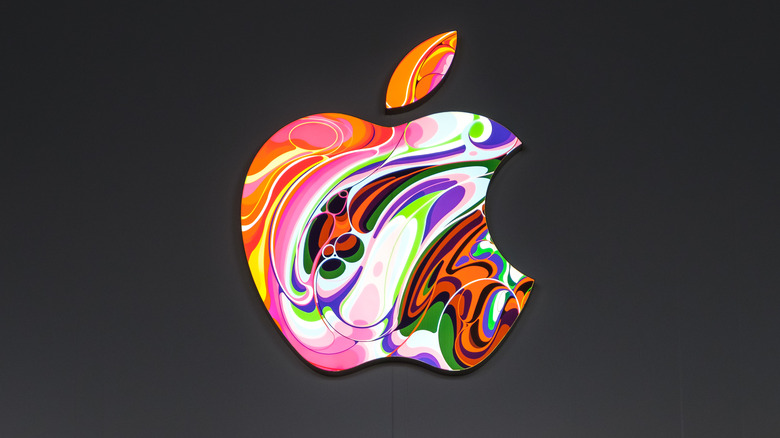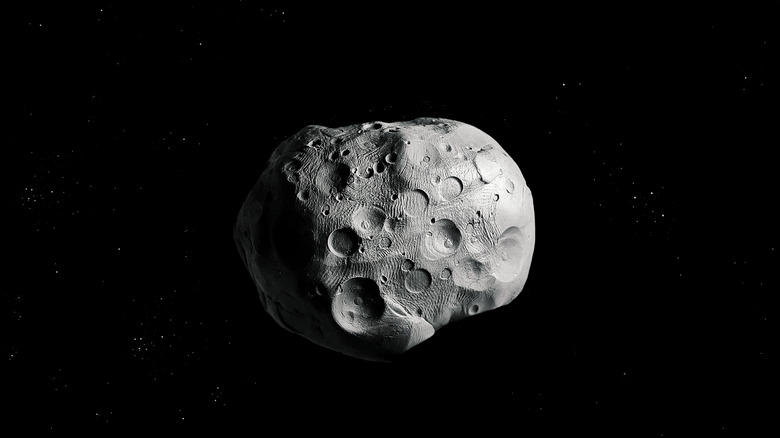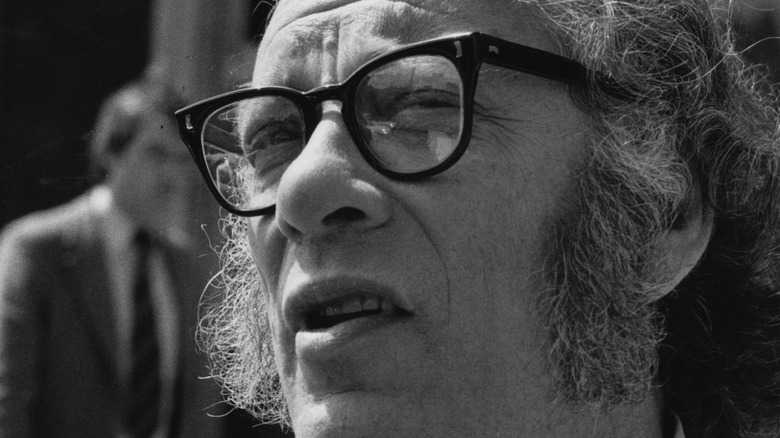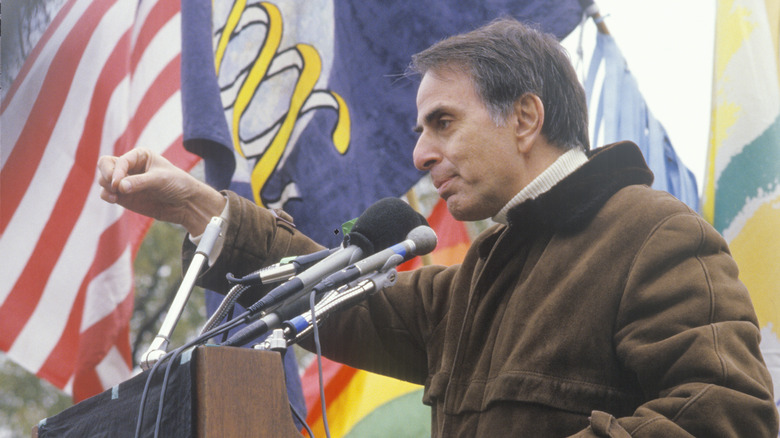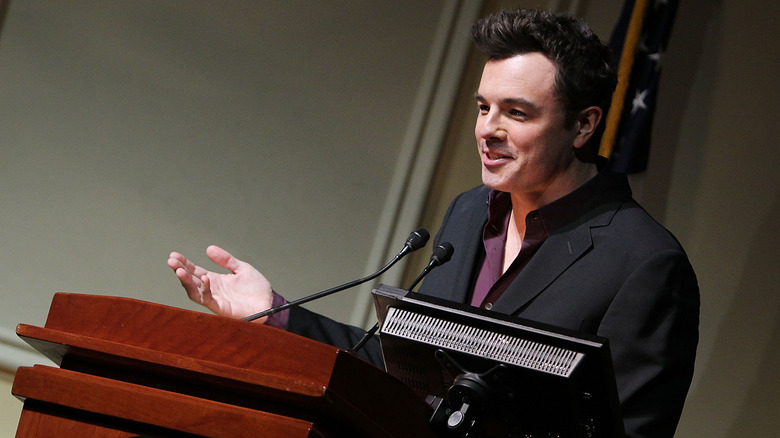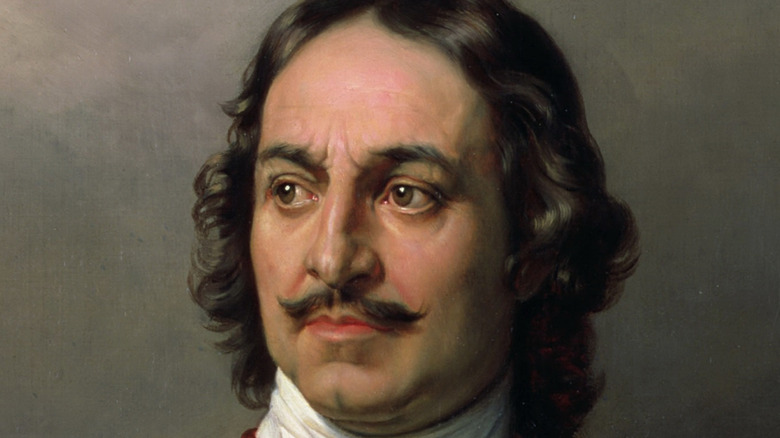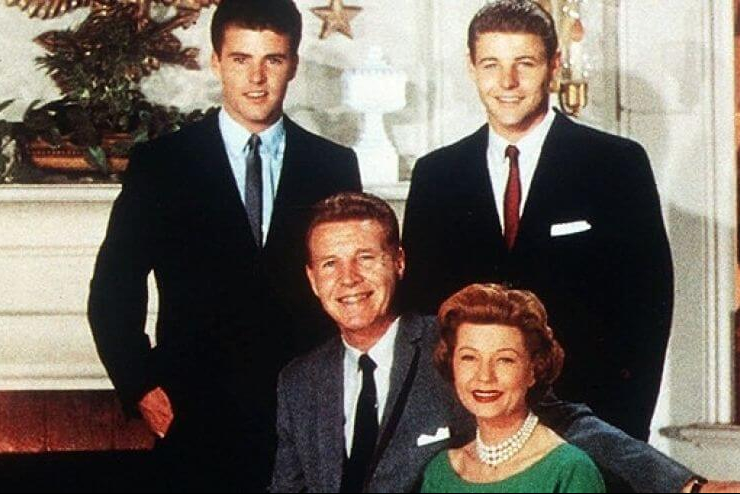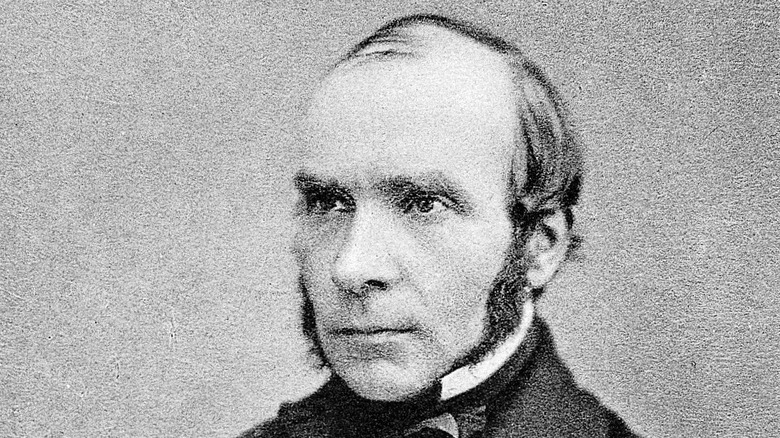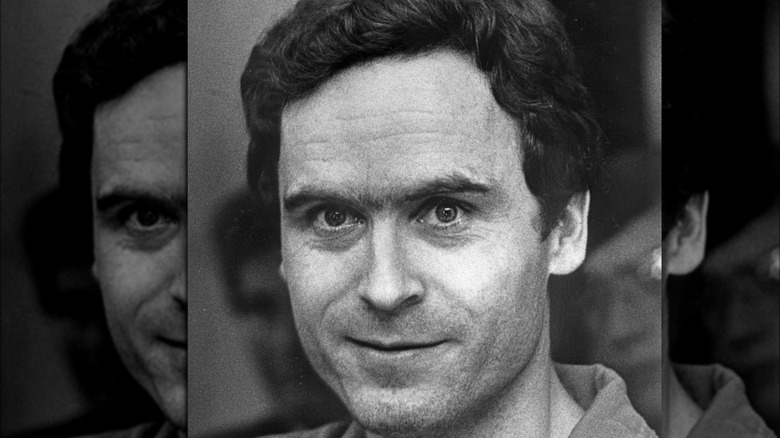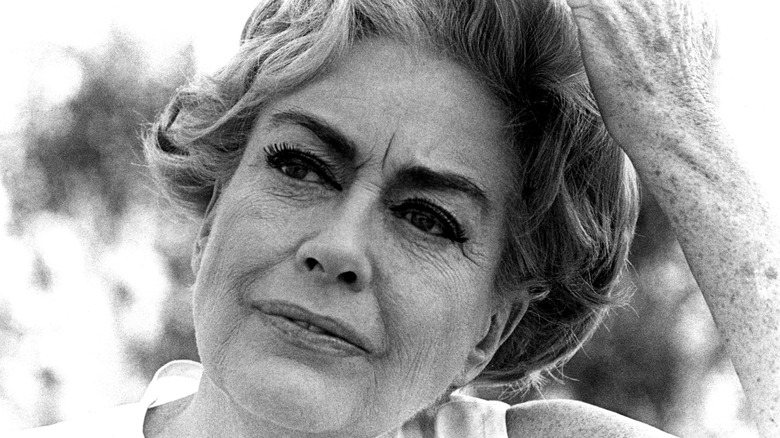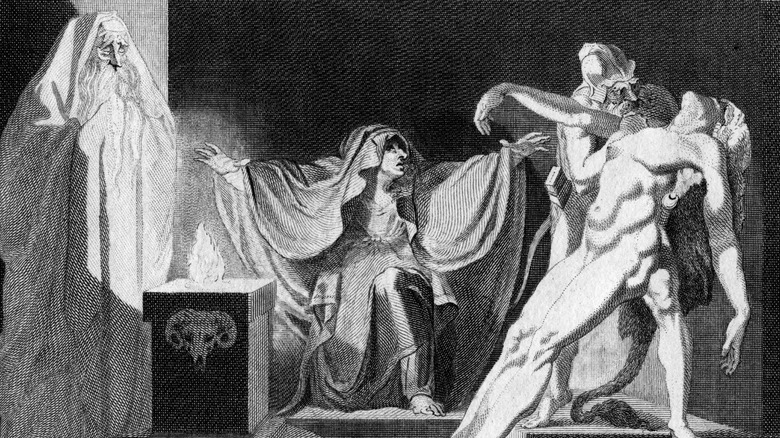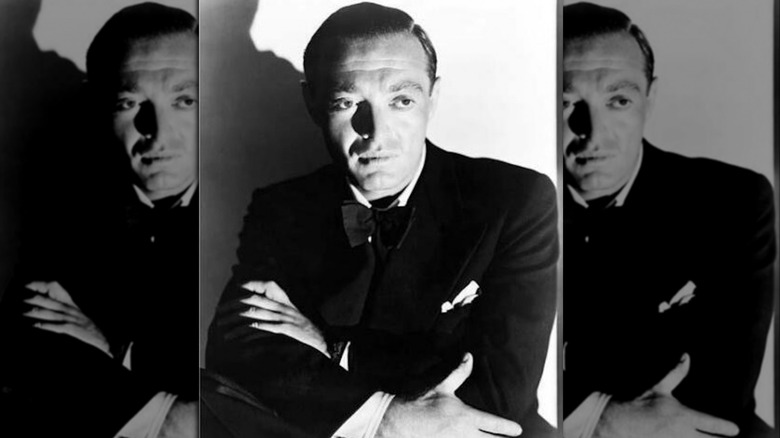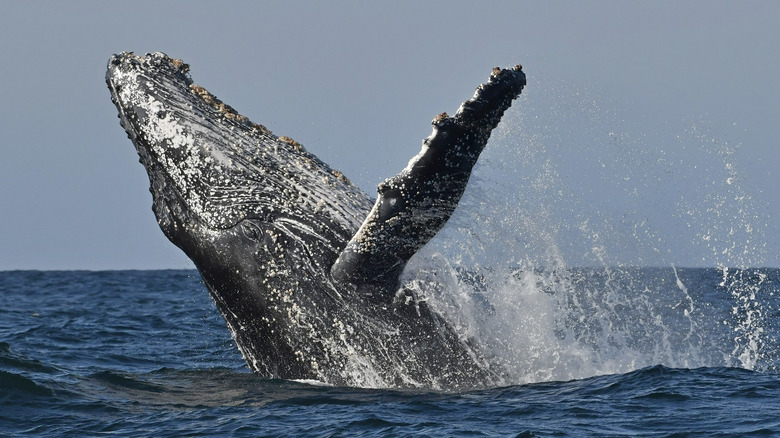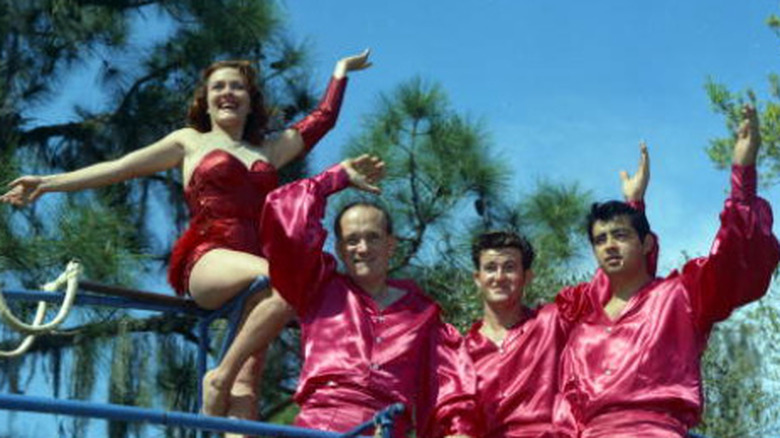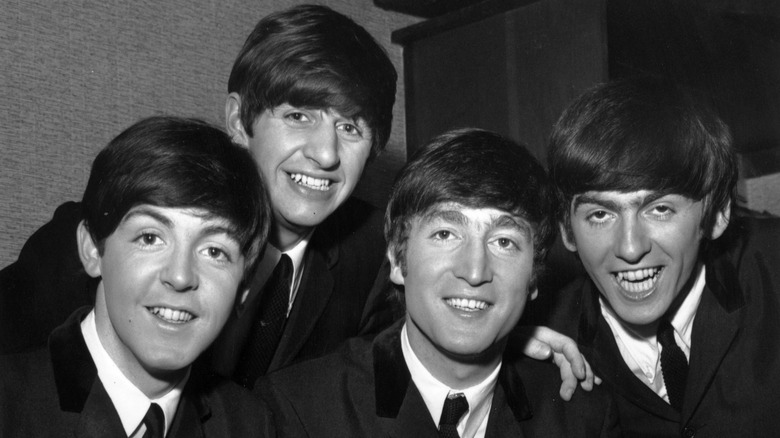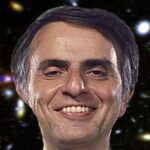
The Untold Truth Of Carl Sagan
Few names have become as synonymous with science communication as that of Carl Edward Sagan. He took his love for science, particularly astronomy, a step further by not just embracing it as his career, but also sharing it with the public. Throughout his lifetime, the famed astrophysicist and astrobiologist received numerous awards and recognition; he also wrote incredibly popular nonfiction and science fiction books that quickly became bestsellers (via Space.com).
On top of that, Sagan was also the primary driving force behind the hit 1980s television series “Cosmos: A Personal Voyage.” As the show’s narrator and co-writer, Sagan stirred scientific inquiry and wonder in audiences across the world, discussing topics such as the mythologies of stars, the human brain, and even life beyond Earth. “Cosmos” became so popular that it held the title of “most widely watched series in the history of American public television” for a decade.
Even years after his death, Sagan continues to be an influential figure in science communication, with science popularizers like Neil deGrasse Tyson and Bill Nye openly acknowledging Sagan’s role in shaping their own careers. Here’s a closer look at some peculiar facts and events in the life and legacy of the man Smithsonian Magazine called the “gatekeeper of scientific credibility.”
Carl Sagan had a bachelor's degree in 'nothing'
Born on November 9, 1934, Carl Sagan was the child of a garment worker and a homemaker. According to Wired, Sagan mused that despite neither of his parents being science experts, he learned skepticism and wonder from them, which he described as “two uneasily cohabiting modes of thought that are central to the scientific method.” At 4 years old, a fateful trip to the 1939 New York World’s Fair played a crucial role in his future career as a scientist, as television, time capsules, and other curiosities captured his attention.
Sagan seemingly had no problem tackling challenging science topics, even those bordering on the political. In hindsight, a competition-winning high school essay that pondered whether man’s first extraterrestrial contact would mirror the destruction Europeans wrought upon Native Americans foreshadowed how science and activism would factor heavily into his adult life (via The 8 Percent).
Sagan’s life as a student wasn’t always a bed of roses, though. Sagan’s biography tells the story of how his thesis came back to him filled to the brim with corrections, which was an eye-opener for him. After rewriting the paper and complying with the University of Chicago’s requirements, he demonstrated his sense of humor by capitalizing on the institution’s rule about students declaring majors after receiving degrees. Thus, in 1954, Sagan received a degree in self-proclaimed “nothing,” followed by a second bachelor’s in physics in 1955 and a master’s in the same subject in 1956.
Many of Carl Sagan's fellow academics didn't like him
As a naturally charismatic communicator, Carl Sagan’s work as an educator, author, and speaker became the foundation of his career in popularizing science. Unfortunately, many of his fellow academics saw this as a bane rather than a boon — and this negative perception of Sagan in some sectors of the academe impacted his career.
“Students loved him, but some fellow academics bristled at what they perceived as self-aggrandizement and pandering to the public,” wrote Dr. David Morrison, Sagan’s first doctoral student and former director of the Carl Sagan Center for the Study of Life in the Universe. According to Morrison, this led to Harvard University denying him tenure in 1967, a year after his co-authored book “Intelligent Life in the Universe” brought him national fame. Fortunately, Cornell University saw great value in having a rising star become part of their faculty and offered Sagan a seat.
Decades later, Sagan remained a polarizing figure in the scientific community. Smithsonian Magazine recounts that in 1992, the astrophysicist almost got elected to the National Academy of Sciences, the premier organization of scientific researchers in the United States. Some Academy members objected to this, saying that Sagan fell short in terms of actual research. Ultimately, he was removed from the list — a decision that the Academy seemingly wanted to make up for by awarding Sagan an honorary medal for his science communication efforts in 1994.
Carl Sagan had a famous catchphrase that he never actually said
Many associate Carl Sagan with the catchphrase “billions and billions,” owing to the way he pronounced “billions” while narrating “Cosmos.” According to How Stuff Works, this was a deliberate choice: Anticipating that some audiences may mishear “billions” as “millions,” he made sure to put emphasis on the first letter of the former. However, the famous slogan attributed to Sagan is nothing more than a manifestation of the Mandela effect, as he never actually said “billions and billions” on the show.
This popular misconception can be traced back to “The Tonight Show” host Johnny Carson and his well-received impersonation of the scientist. Due in no small part to Sagan’s frequent guest appearances on the show, Carson’s Sagan impression caught on with audiences, particularly his repeated delivery of the phrase “billions and billions.” Over time, Sagan had trouble disassociating himself with the catchphrase he never said — and perhaps that’s why he decided that if he couldn’t beat them, he’d join them instead.
Eventually, Sagan released a book humorously titled “Billions and Billions,” in which he briefly tacked the subject. He wrote: “It’s hard to talk about the Cosmos without using big numbers… But I never said ‘billions and billions.’ For one thing, it’s too imprecise…. For a while, out of childish pique, I wouldn’t utter or write the phrase even when asked to. But I’ve gotten over that. So, for the record, here goes: ‘Billions and billions.'”
Carl Sagan wanted to legalize marijuana
Despite the fact that he never really tried to hide it, one aspect of Carl Sagan’s life that gained significantly more attention after his death was his support for marijuana use.
In an interview, the astrophysicist explained his stance on allowing the terminally ill to benefit from cannabis, citing the lack of evidence of marijuana being an addictive drug. “Is it rational to forbid patients who are dying from taking marijuana as a palliative to permit them to gain body weight and to get some food down? It seems madness to say, ‘We’re worried that they’re going to become addicted to marijuana,'” he said.
More people became familiar with Sagan as a proponent of cannabis use when a 1969 essay he had written under a pseudonym was brought up three years after his death. According to Open Culture, Keay Davidson’s book “Carl Sagan: A Life” talked about the piece, which Sagan had written as “Mr. X.” Initially published in 1971’s “Reconsidering Marijuana,” the scientist enumerated the benefits of using the drug, based on his personal experience: “When I closed my eyes, I was stunned to find that there was a movie going on the inside of my eyelids […] Each flash brought the same simple scene into view, but each time with a different set of colors… exquisitely deep hues, and astonishingly harmonious in their juxtaposition. Since then, I have smoked occasionally and enjoyed it thoroughly.”
Carl Sagan believed that humans weren't so special (and should probably leave Mars alone)
Carl Sagan made it publicly known that he was an agnostic, not an atheist (via India Today). As he had no solid proof on hand, he could neither prove nor disprove the existence of a supreme being. Similarly, this absence of evidence made it clear to Sagan that humans weren’t selected by some divine hand to become a higher species among other organisms on Earth. Rather, he saw Homo sapiens as simply one of many twists and turns in the planet’s evolutionary history, and expressed a belief that if extraterrestrial life were to ever make contact with humanity, its level of intellect would be vastly superior.
Sagan also had an interesting take on space exploration. In a video interview, Sagan criticized NASA’s Space Shuttle program: “They send three, five, seven people up in a tin can, 200 miles up… they go around the Earth for about a week and do something, that tomato plants don’t grow or something, and then they say, ‘We’ve done space exploration.’ That’s not space exploration; space exploration is going to other worlds.”
However, while Sagan pushed for “true” space exploration, he was also clear about respecting life on other planets. He said, “If there is life on Mars, I believe we should do nothing with Mars. Mars then belongs to the Martians, even if the Martians are only microbes” (via Discover Magazine).
Carl Sagan got engaged over a phone call, before a first date
The life of a scientist can be demanding, sometimes to the detriment of the scientist’s personal life. In the case of Carl Sagan, this may have been why his first two marriages didn’t quite work out: As India Today shares, his former spouses pointed out how Sagan seemed to prioritize his career advancement over his family. Interestingly, this dedication to his work became the means for him to meet his third and final wife: A woman who matched him so well that they got engaged before a first date.
According to NPR, Sagan and writer Ann Druyan met in 1977 while working together on the phonograph records that NASA attached to the two Voyager Interstellar Mission spacecraft. Designed to last for up to a billion years, the capsules contained greetings and music in different languages, as well as other bits of information about human life and culture. When Druyan found a 2,500-year-old Chinese song to include in the records, she phoned Sagan excitedly. The physicist called her back after an hour, and their conversation gradually went from two colleagues sharing insights to two lovers committing to get married. As Druyan recalled, “It was this great eureka moment. It was like a scientific discovery.” Sagan and Druyan made their engagement public knowledge two days after Voyager’s flight; they got married in 1981, and stayed together until Sagan passed away 15 years later.
Carl Sagan sued Apple for codenaming a product after him
When a manufacturer names its product after someone, it’s usually to honor the individual or a paid endorsement. In the case of Apple, using Carl Sagan’s name as the internal codename for its Power Macintosh 7100 computer didn’t necessarily fall under either reason.
According to Time, in the early ’90s, Apple internally referred to the 7100 as “Carl Sagan” based on its desire to sell “billions and billions” of units — a reference to the astronomer’s catchphrase. The company was also developing the Power Mac 6100 (codenamed “Piltdown Man“) and 8100 (codenamed “Cold Fusion“). Sagan didn’t appreciate the unauthorized use of his name, and was reportedly incensed about being placed alongside two names of scientific hoaxes. After contacting Apple, Sagan wrote a letter to MacWeek in 1993, publicly denouncing the product. Apple responded by changing the 7100’s codename to the totally mature BHA: “Butt-Head Astronomer.”
Sagan sued Apple for libel, but lost. As the court ruling stated: “One does not seriously attack the expertise of a scientist using the undefined phrase ‘butt-head'” (via Engadget). Unsatisfied, Sagan sued again, this time for Apple’s initial use of his name. Though Apple also won this lawsuit, the company settled with Sagan out of court and issued a public apology. As a final act of defiance, Apple’s engineers gave the 7100 a new codename: LAW (“Lawyers Are Wimps”). Sagan had the last laugh, though: the 7100 did not end up making “billions and billions.”
A unit of measurement and an asteroid were named after Carl Sagan
Neatorama defines the fictitious unit of measurement “sagan” as “at least 4 billion.” A humorous riff on the catchphrase that has been incorrectly attributed to the astronomer, the logic behind this definition is that the word “billions” refers to at least two billion; hence, “billions and billions” would have to be at least twice that number. This is different from the concept called “Sagan’s number,” which refers to “the total number of stars in the observable universe” (via Numericana).
In addition, a small asteroid in the Mars-Jupiter asteroid belt, 2709 Sagan, bears the scientist’s name (via In-The-Sky.org). It has a companion asteroid called 4970 Druyan. As explained in “Carl Sagan: A Biography,” discoverer Dr. Eleanor F. Helin named the asteroid after Ann Druyan due to the fact that it’s locked in an “eternal orbit” with 2709 Sagan. Druyan even received a plaque with the inscription: “Asteroid 2709 Sagan in eternal companion orbit with asteroid 4970 Druyan, symbolic of their love and admiration for each other” (via Skeptical Inquirer).
Carl Sagan never set foot on Mars, but there is a tribute to the scientist on the surface of the red planet. Its seeds were planted in the imagination of Sagan’s son, Nick, who included a Martian memorial plaque for Sagan in the “Star Trek: Enterprise” episode he scripted. In 1997, NASA made this into a reality by officially naming the Mars Pathfinder lander the Carl Sagan Memorial Station.
Carl Sagan and Isaac Asimov were good friends (and idolized each other)
It’s hardly surprising that two influential figures in the fields of popular science and science fiction would end up developing mutual respect and admiration for each other. Carl Sagan enjoyed a healthy friendship with renowned novelist and biochemist Isaac Asimov, which they maintained through notes and letters exchanged over the course of a quarter-century.
As stated in Faena, Asimov described his first meeting with Sagan, who was 14 years younger than him, as an encounter that did not turn out the way he expected: “I imagined he would be an old person (the stereotypical astronomer with a telescope), but what I actually found was a young, attractive, twenty-seven year old; tall, dark, eloquent, and absolutely and incredibly intelligent.” In 1973, Asimov wrote Sagan a short congratulatory letter full of praises for Sagan’s writing prowess, with just a tinge of humor at the end: “One thing about the book made me nervous. It was entirely too obvious that you are smarter than I am. I hate that.”
Interestingly, Sagan was only one of two people whom Asimov acknowledged as smarter than him. The other one, according to Popular Mechanics, was computer scientist and AI pioneer Marvin Minsky.
Carl Sagan was a feminist, climate-change activist, and pseudoscience debunker
Carl Sagan understood that science impacts all aspects of life, and that scientists should not stay mum about societal issues. This stance manifested even in the development of his hit TV series “Cosmos.” Initially titled “Man and the Cosmos,” Sagan felt that it sounded too sexist, and ended up replacing it with just “Cosmos” and its subtitle (via Smithsonian Magazine). In a 1978 essay published in the New York Times, Sagan also noted his concerns about the gaps in racial representation in “Star Trek”: “In a global terrestrial society centuries in the future, the ship’s officers are embarrassingly Anglo‐American.”
Sagan also raised awareness about Earth’s changing climate, years before mainstream media began heavily featuring it. In his 1980 book “Cosmos” (which he wrote as a companion to the TV show), he warned about how the constant burning of fossil fuels could create a “greenhouse effect” that would superheat the planet: “The surface environment of Venus is a warning: something disastrous can happen to a planet rather like our own.”
Up until his death, Sagan actively fought against pseudoscience. He even warned viewers about the increasing prominence of pseudoscientific beliefs in the United States in his 1996 interview with Charlie Rose, which ended up being his last.
Carl Sagan was arrested for protesting nuclear weapons testing
Carl Sagan wasn’t content with just writing essays to stand for his beliefs, though. A staunch opposer of the Vietnam war, he also participated in public demonstrations against wartime nuclear testing. These acts led to him being arrested alongside other activists, according to Santa Clara University.
Sagan was among 139 people arrested on October 1, 1986 at a nuclear test site in Nevada. He took part in a protest rally organized by doctors, health care professionals, and peace advocates who wanted to put a stop to nuclear tests. Sagan did not mince words about the test: “It’s about as sensitive as our Government’s response to the 40th anniversary of the bombing of Hiroshima — which was to blow up another weapon” (via the New York Times). Just four months later, Sagan was arrested at the site once more, alongside 437 other protestors. The New York Times reports that Sagan joined prominent figures such as Martin Sheen, Kris Kristofferson, and Robert Blake in protesting the government’s nuclear test in the face of a Soviet moratorium.
Seth Macfarlane helped preserve Carl Sagan's legacy
In 1994, Carl Sagan was diagnosed with myelodysplasia, a disease that severely affects blood cell production. Despite a bone marrow transplant, his condition continued to worsen; he passed away on December 20, 1996 at the age of 62 (via Smithsonian Magazine). Sagan’s accomplishments and contributions to science popularization were more than enough to solidify his legacy. However, an admirer of Sagan’s went the extra mile to ensure his work would survive the passage of time: none other than “Family Guy” creator Seth MacFarlane.
According to Space.com, MacFarlane donated a large sum of money to the U.S. Library of Congress to help it secure about 800 boxes full of Sagan’s book drafts, recordings, and files. The collection even included Sagan’s report cards and notebooks, as well as his “extensive correspondence with scientists and other major figures of the 20th century” (via the U.S. Library of Congress).
In an official statement, MacFarlane explained the simple reason why he endeavored to protect Sagan’s legacy: “The work of Carl Sagan has been a profound influence in my life, and the life of every individual who recognizes the importance of humanity’s ongoing commitment to the exploration of our universe.”

Why Ozzy Osbourne Landed A Bad Reputation In The Music World
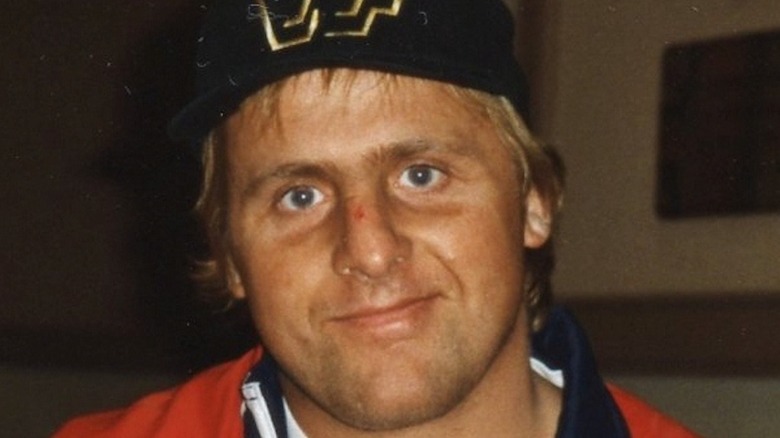
Why AEW's Owen Hart Foundation Partnership Has Wrestling Fans Divided
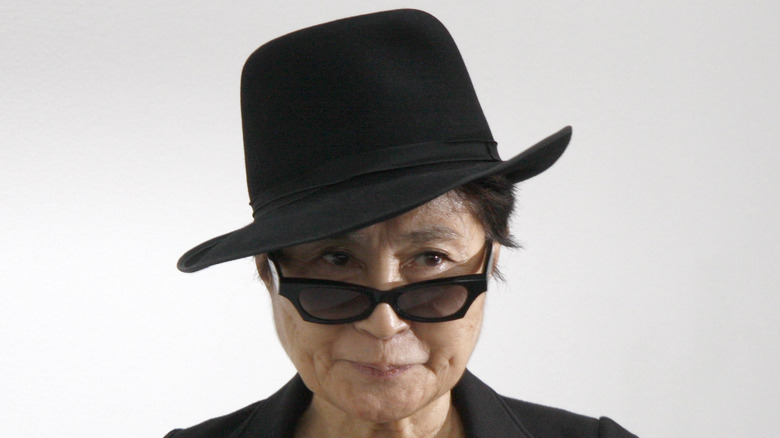
The Untold Truth Of Yoko Ono
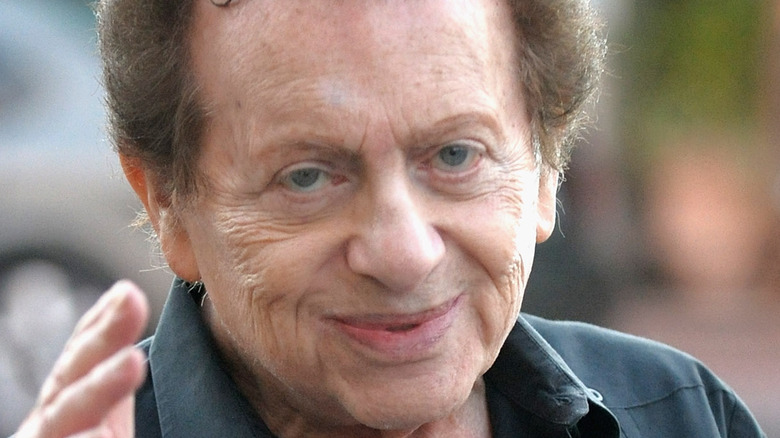
The Heart-Wrenching Death Of Jackie Mason
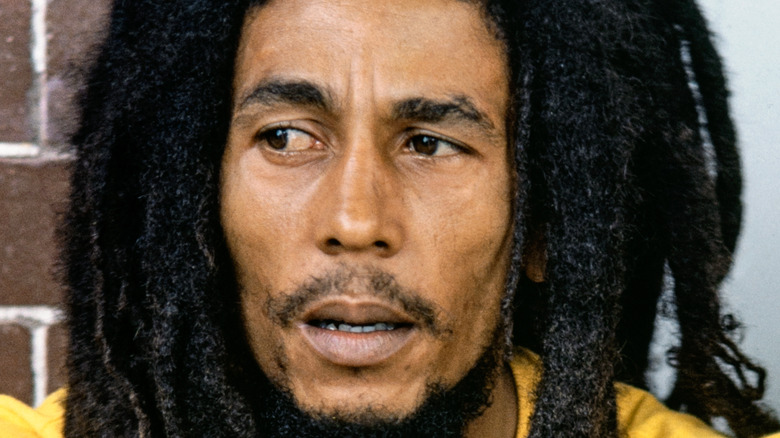
A Look At Bob Marley's Complex Relationship With His Wife
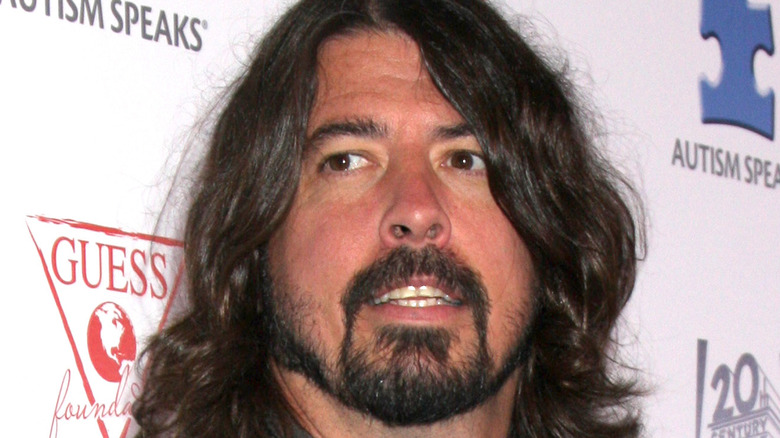
The Making Of This Foo Fighters Album Was A Mess

The NASA Job You Never Knew Jack Black's Mom Had
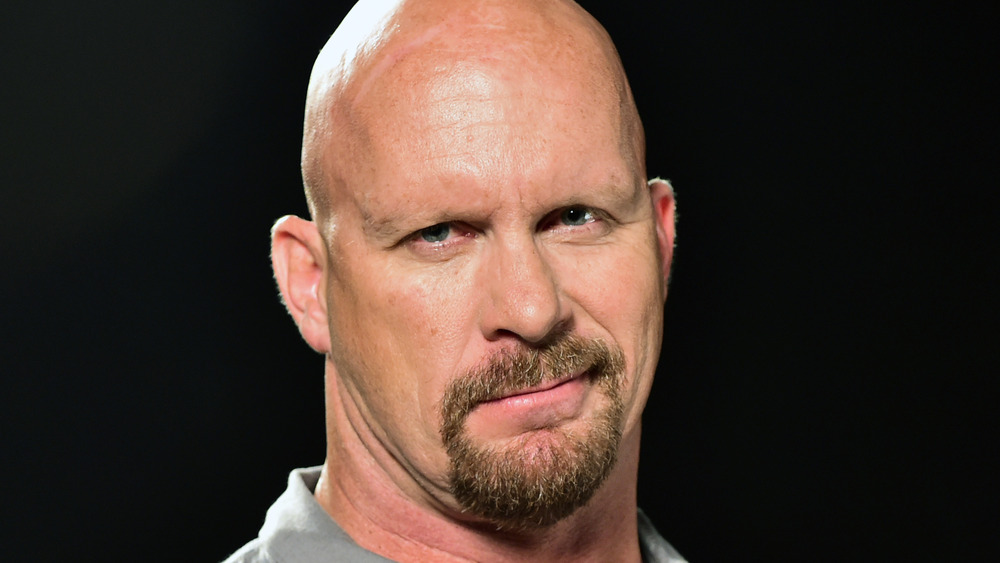
Details You Should Know About Stone Cold Steve Austin's Ex-Wives

The Untold Truth Of Ink Master
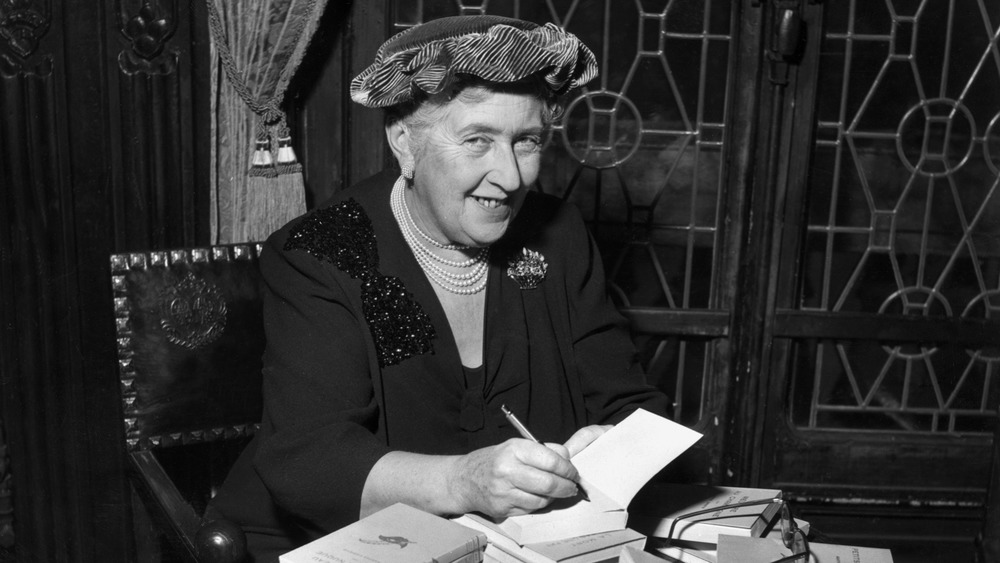
The Untold Truth Of Agatha Christie

